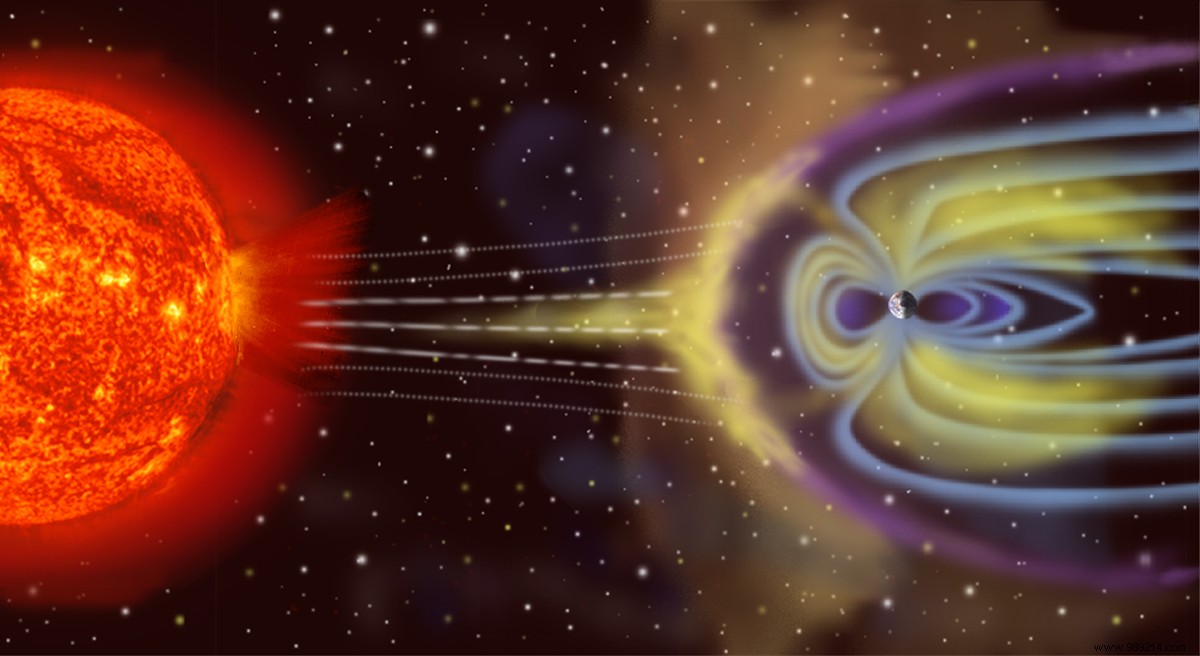A team of researchers announces that they have identified the first signature of a magnetic field surrounding an exoplanet. Around the Earth, this type of structure acts as a shield against energetic particles coming from the Sun. Magnetic fields could play similar roles on other worlds.
HAT-P-11b is a Neptune-sized exoplanet found123 light-years from Earth . As part of a study, a team relied on the Hubble telescope to probe the interactions of this world with its host star in the ultraviolet.
These observations made during six transits (six passages of the planet in front of its star) revealed the presence of carbon ions , charged particles that interact with magnetic fields, circling the planet before heading away from it in a long tail in the direction away from the star. Around the Earth, this type of structure is also observed thanks to the magnetosphere.
In other words, the Hubble data made it possible to identify the magnetic field signature of a planet outside our Solar System . This is a first, the details of which are reported in the journal Nature Astronomy.
Around the Earth, the magnetosphere acts as a screen protecting the surface from excess solar wind energy. Without it, there would simply be no life as we know it. Relying on the solar wind to deflect it also involves distorting the magnetic field around the Earth, usually making it look like a comet tail.
As these fields have a crucial role in protecting planetary atmospheres, the ability to detect them around exoplanets is an important step towards a better understanding of their habitability . Note that not all planets and moons in our system have their own magnetic fields. The link between magnetic fields and the habitability of a planet has yet to be studied.

The researchers also found that the metallicity of the atmosphere of the exoplanet (the number of chemical elements heavier than hydrogen and helium) was lower than expected . In our system, the ice giants Neptune and Uranus are metal-rich but have weak magnetic fields, while Jupiter and Saturn have low metallicity but strong magnetic fields. Here, the low atmospheric metallicity of HAT-P-11b therefore challenges current models of exoplanet formation.